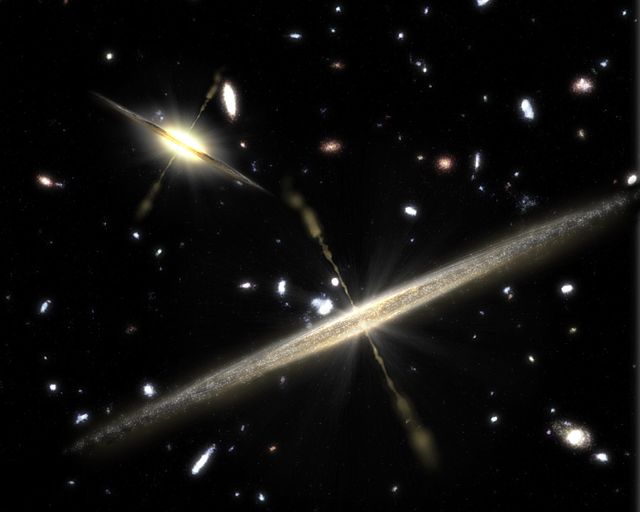
A bit more from Geraint F. Lewis and Luke A. Barnes, A Fortunate Universe: Life in a Finely Tuned Cosmos (Cambridge: Cambridge University Press, 2016):
“Consider gravity. Newton described gravity with his famous ‘inverse square’ law: any two masses attract each other, with a force that decreases with the square of the distance. Einstein’s General Theory of Relativity is a more accurate and more difficult improvement on Newton’s theory. In both theories, a quantity known as Newton’s gravitational constant appears, which is usually given the symbol of G and has a value of 6.67 x 10-11 m3 kg-1 s-2.
“If the value of G were different, what would happen? We need to be a bit careful here. Suppose we’ve transported you to another universe and asked you to measure G. You’ll need to calibrate your instruments to measure metres, seconds and kilograms. But wait . . . that platinum-iridium lump is back in our Universe! Thankfully, changing G doesn’t affect the elements, so we can (in principle!) make what we need. With some caesium 133, you can calibrate your clocks to measure seconds. Measuring the speed of light gives the metre: the distance light travels in 1/299, 792, 458 of a second. We can then construct a replica platinum-iridium lump to give us the kilogram. You can then measure G.
“Nothing in Newton’s or Einstein’s theory tells us the value of G. We have to ask nature, measuring from experiment.
“In Newton’s theory, if G were twice as large, the gravitational force between masses would be twice as large. In Einstein’s deeper understanding of gravity, G measures how strongly mass and energy distort the geometry of spacetime. Changing the value of G affects just about everything in astrophysics, from the expansion of the Universe and the formation of galaxies to the size and stability of stars and planets.
“Similar constants appear in all of the force laws, where they are called coupling constants. The only way we have of knowing the value of these constants is to measure them from nature.” (pages 30-32)
Let me repeat two of those sentences: (1) “Nothing in Newton’s or Einstein’s theory tells us the value of G. We have to ask nature, measuring from experiment.” (2) “The only way we have of knowing the value of these constants is to measure them from nature.”
In other words, important as these constants are to the emergence of the Universe and of life within it, there is (so far as we now know) nothing inevitable about them. Neither Newton’s theory nor Einstein’s theory predicts their specific values. That is — once again, so far as we know — they’re both contingent. They could have been otherwise. And, in many cases, had they been even slightly different than they actually are, neither we nor the planets, stars, and galaxies would be here.










